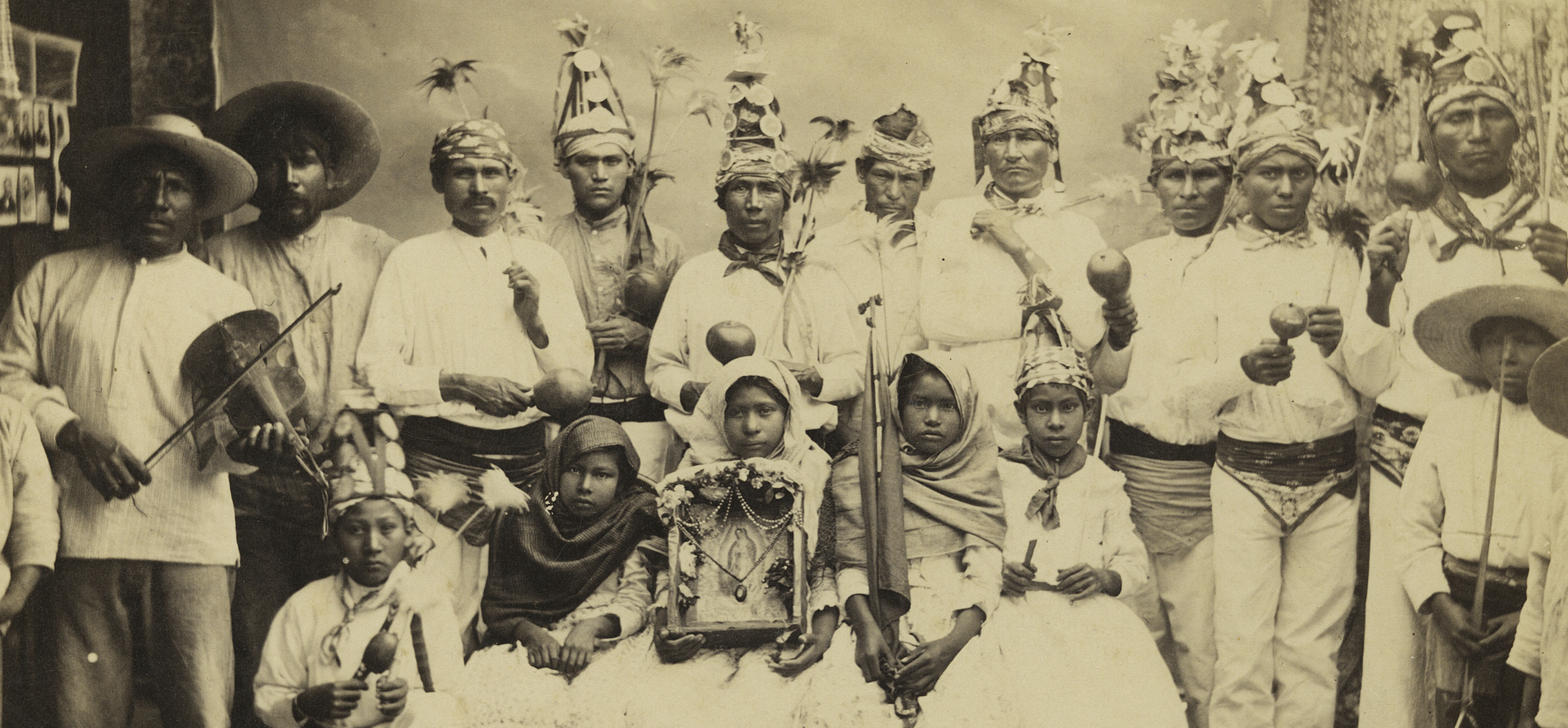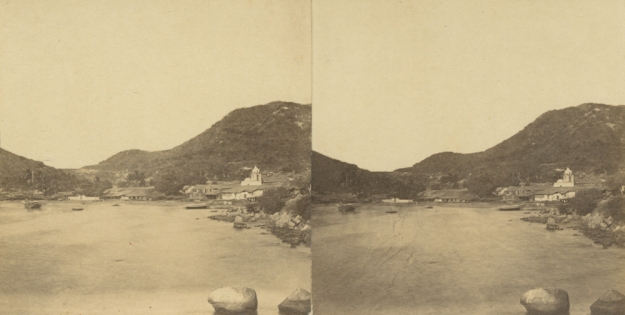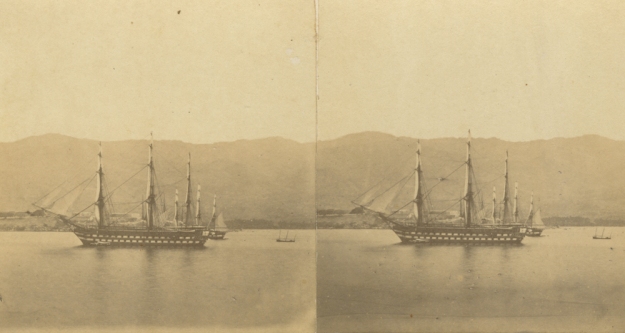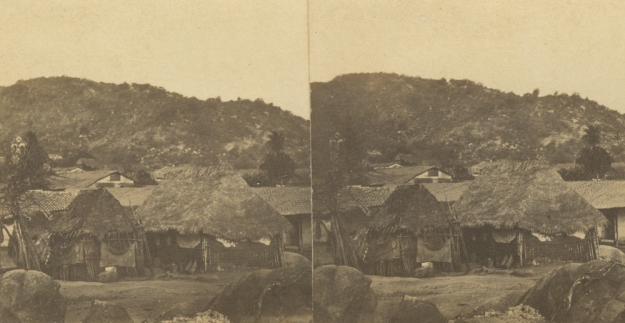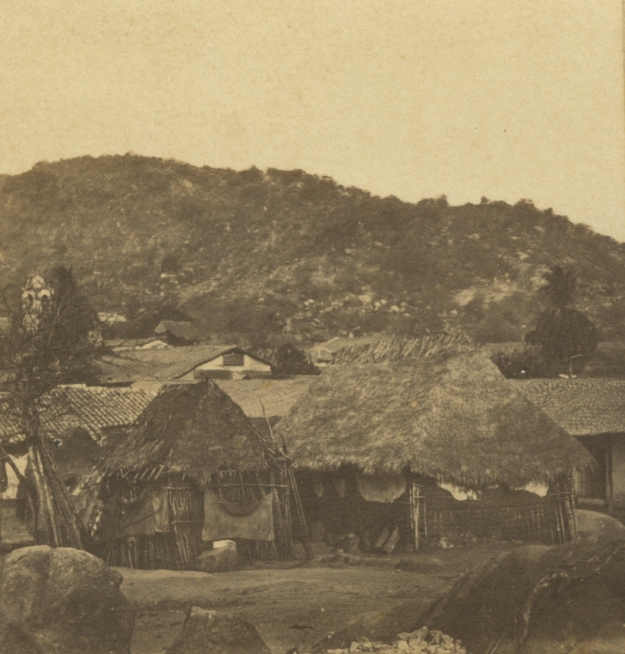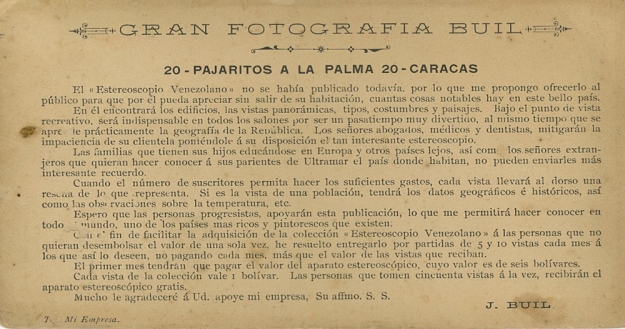
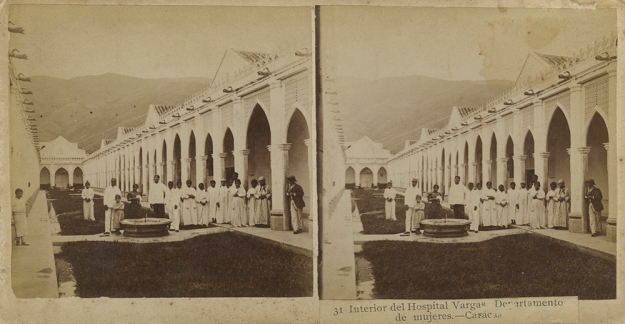
Interior del Hospital Vargas. Departamento de mujeres, Caracas. Estereoscopio Venezolano. Interior of Hospital Vargas. Women department, Caracas. Venezuelan stereoscope.
During the last month we have contacted different collections, scholars and specialists of the history of photography in Venezuela to try and find information on photographer J. Buil. So far, this man remains a complete mystery… so much so that we do not know his first name or where he came from.
Based on what was printed on the back, we know that this stereoscopic view was intended for commercial use and that it was part of a series of at least 31 views. Until today we have not found any other.
Besides the information on the reverse of this stereoview, the only other information on Buil that we have found has been on the book Historia Documentada de la Fotografía en Venezuela, where Manuel Barroso states that in 1890 Próspero Rey associated with Buil to form a photography studio, which they named “Buil y Rey.” Barroso also wrote that “their photographs would be distinguished by their sepia tonalities.” However, we don’t have a specific date of when they disolved their partnership.
Looking at the technique and the paper used we can establish that this albumen print was made in the early 1890s – definitely after 1891 considering that the Hospital Vargas in Caracas was inaugurated in January 1, 1891 and open to the public on July 5 of that same year.
Here is a lose translation of what is written on the verso:
GRAN FOTOGRAFIA BUIL – Pajaritos a La Palma 20, Caracas
The “Venezuelan Stereoscope” has yet to be published, so my intention is to offer it to the public so they can see through it – without having to leave their home – how many notable things are in this beautiful country.
On it you will find buildings, panoramic views, types, customs and landscapes. Under the recreational point of view, it will be indispensable in all the living rooms for being a very fun hobby, while at the same time appreciating the geography of the Republic. Lawyers, doctors and dentists will quench the impatience of their clients by putting at their disposal the, oh so interesting, stereoscope.
The families that have children being educated in Europe and other far away countries, as well as the foreigners that want to show their relatives overseas the country where they live, couldn’t send them a better souvenir.
When the number of subscribers permits us to make the necessary expenses, each view will have on the reverse a review of what it represents. If it’s a landscape of a population, it will have the geographic and historical data, as well as observations about the temperature, etc.
I hope that progressive people will support this publication, which will help me let the rest of the world know one of the most rich and picturesque countries that exists.
With the purpose of facilitating the acquisition of the collection “Venezuelan Stereoscope”, for those who prefer to not pay the full collection at once I have decided to make it possible for you to get five and ten views every month, only paying those that you will receive monthly.
The first month you will have to pay the price for the stereoscopic apparatus, which is valued in six bolívares. Each view of the collection is worth one bolívar. People who take fifty views at once will receive the stereoscopic apparatus for free.
I truly appreciate your support for my enterprise.
Yours sincerely, J. Buil
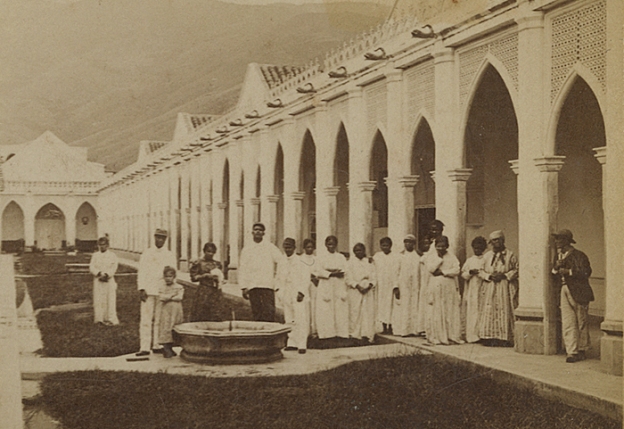
Interior del Hospital Vargas. Departamento de mujeres, Caracas. Estereoscopio Venezolano.
Have you ever heard about J. Buil? If you have any information about him we would love to hear about it. Write us an email or simply comment below! Remember we accept contributions in Spanish, English or French, and don’t forget to sign up in order to receive notifications of new posts by email.
Update on the Caracas-La Guaira Railway in the XIX century post: Thanks to Lisa Blackmore we were able to establish that the railway photographs were taken by José Antonio Salas. On her website she has a post about a book called “Illustrated Guide to Caracas (1889)”; we were able to match image 13, where it is clearly stated that the photographer was Salas, to one of our own. Image 9 is also the same as our view of La Guaira, which is credited to V. Amato.
Salas is considered to have been the official photographer of the regime of Guzmán Blanco.
